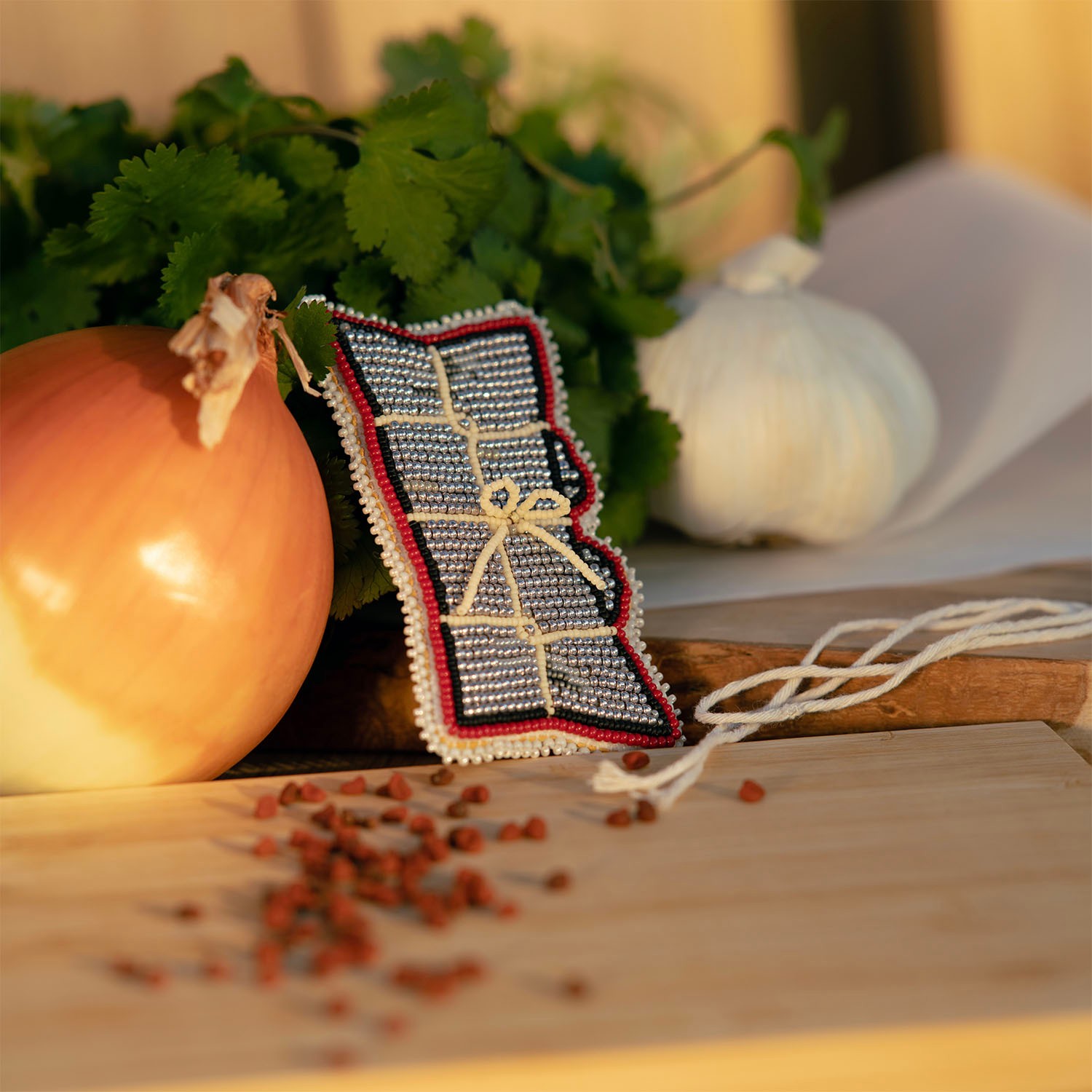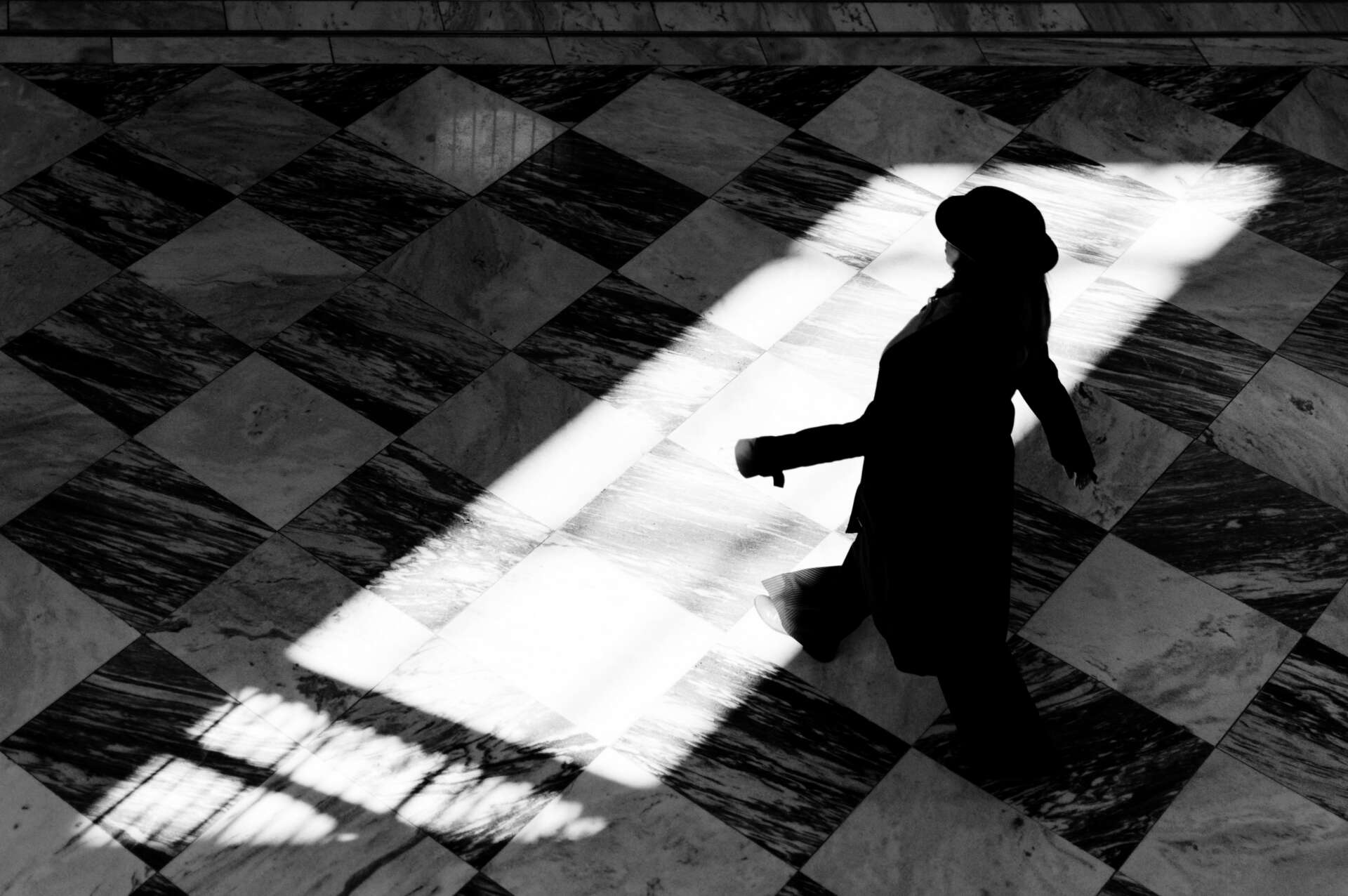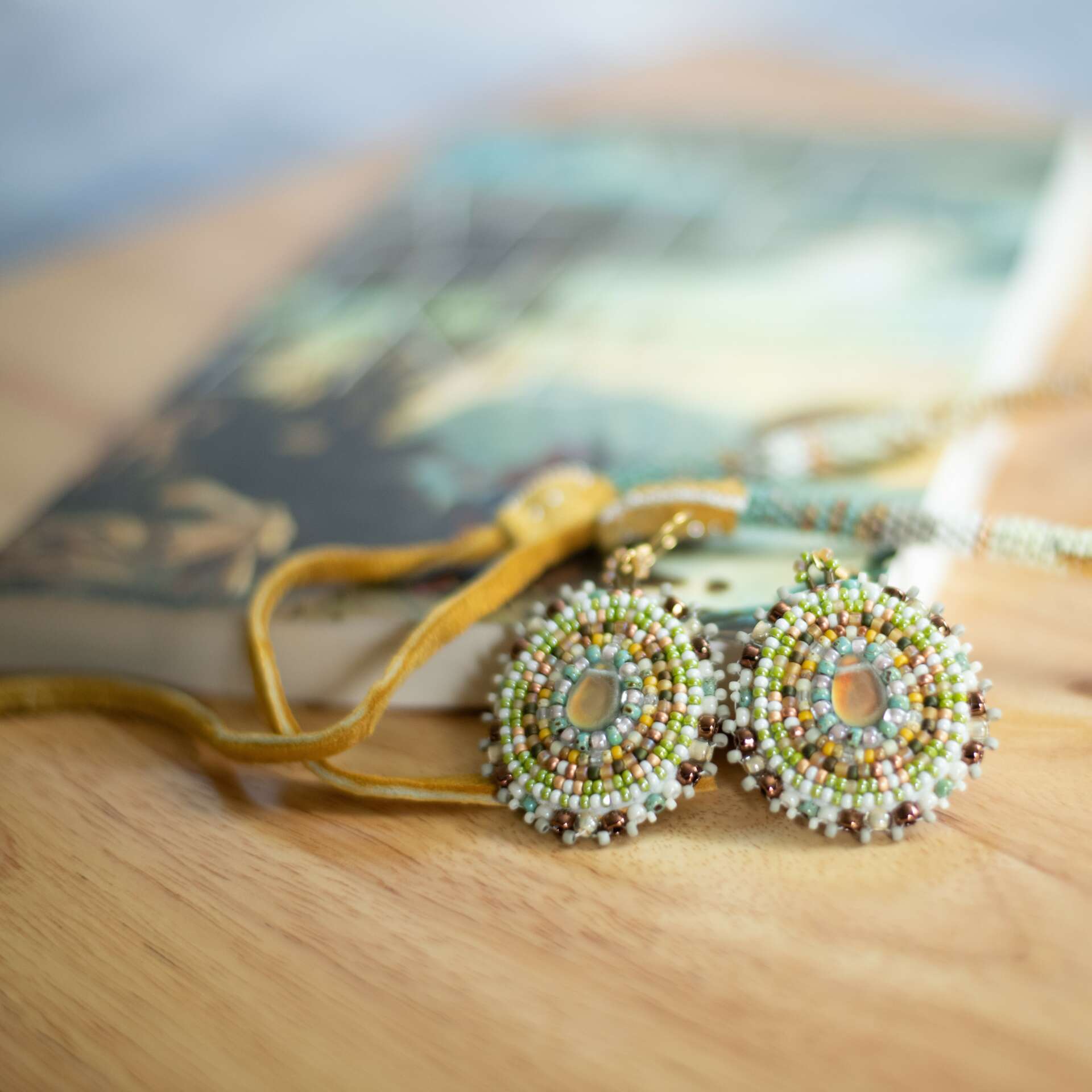We recently connected with Jennifer Gouge and have shared our conversation below.
Alright, Jennifer thanks for taking the time to share your stories and insights with us today. We’d love to hear about a project that you’ve worked on that’s meant a lot to you.
My projects tend to be pretty interwoven, but I think the elements in them that stand out as most exciting for me are the incorporation of cultural foods and language in my work. I mean, you could look at one of the stickers in my shop and see a bean floating in outer space, planted in the location of two colliding galaxies, annotated in the Ojibwe language, and see it for one thing that it is: a very silly image. And it is! It is also so much more than that and it holds so much more meaning to me. My measure of success is that hopefully that meaning carries through to its intended audience. This phrase spoken in Ojibwe, “Ambe wiisinin!” translates to “Come eat!”; I’m hoping this call to a meal carries also a call back to ourselves. That significance, to me, is layered into all of my food pieces, which include imagery of things like Puerto Rican pasteles and coffee—very nostalgic feeling foods that hold so much memory within them. And I have plans to create so much more within these series, so I’d encourage anyone that loves food nostalgia to stay tuned!




Jennifer, love having you share your insights with us. Before we ask you more questions, maybe you can take a moment to introduce yourself to our readers who might have missed our earlier conversations?
Aniin! Jennifer Gouge nindizhinikaaz, migizi nindodem, Odaawaa Zaaga’iganiing nindoonjibaa. Hello! This was my introduction in Anishinaabemowin, my ancestral language. My name is Jennifer Gouge and I am a photographer, beadworker, installation artist, Puerto Rican and Anishinaabe woman of the Lac Courte Oreilles band of Lake Superior Chippewa. I work with various forms of photography and mixed media which lean heavily on the elements of humor, curiosity and surprise. I graduated from Dartmouth College with a BA in Studio Art, but my career did not feel like it had a firm foundation to plant roots in until I started listening more to myself, my history, and how centering these parts of me would call for a departure from fine art culture I’d been introduced to in my academic years. Integral to my work are the concepts of healing, deconstruction, compression and subversion, so I’ll take a short walk through tangible examples of each concept. I think the idea of healing is visible in my beadwork and wearable art that can take form as a sort of hidden armor for the wearer—something that carries a sense of community and kinship to carry through the day and into situations where the wearer might otherwise feel alone. That sense of support is so important to me, and I often feel the need to pull apart the settings I am in to build new and healed versions. I have an ongoing collage series that I’ve used as one avenue of deconstruction, in which I layer map lines and imagery to present them as a singular conversation. Through this I investigate and pick apart the indications and history of the maps I’m incorporating while simultaneously questioning geographic politics and asserting the visibility of Indigenous existence within the same frame. That layering and compression shows through also in my photography, where it can be most simply viewed in the literal compression of lights and darks into high contrast images. A lot of these compositions have flat silhouetted figures interacting with light sources in the worlds they are set in. I see so much potential for storytelling, and story shaping, in the idea of compressed light. There is a wealth to create from the idea that if light can be compressed it can also be stretched, and to further that, the possibilities don’t end with just light. When I weave information into what appears to be negative space I am able to hide ideas in plain sight—this is how I lean on subversion in my practice. I’ll present my manipulations of books as the example here. I’ve definitely been known to install my sticker art between the pages of a book to create a dialogue between the text or imagery contained within them; and I’ll also use more subtle forms of mark making if I’m going for a more quiet conversation and a more “secret message” vibe. The idea is to keep those vibes of working in a clandestine manner; sometimes the subversion may be of the book itself, and sometimes it may be of the individuals that would pass the book over without a discerning gaze. What I’m most excited for is for the book’s final recipient to really feel that journey that the message had to make to, at long last, arrive in their hands.
Is there a particular goal or mission driving your creative journey?
So a large part of my strategy by nature calls for subversion and minute moves that keep my counter-institutional work flying under the radar and landing safely with its intended audiences. So really keeping those maneuvers smooth and creative will always be a goal of mine, out of necessity. I’m really a fan of hiding in plain sight and being playful with it. In the bigger picture, I’d say my goals are shared within my communities: resurgence of our cultures, knowledges, and languages, healing of generational trauma, and strengthening our calls back to ourselves through it all. I’d say a large part of my tactics tie back to storytelling and its healing properties, whether the medium is visual, literary, oral, tactile…really tied into any sense, ritual, season, and so on. I’m trying to set up this experience of messages arriving to the viewer at the right time; some even delivered as a speculative version of a future self leaving instructions behind to be found by chance. Imagine the thrill and curiosity in that moment of discovery. Success in landing that type of message really encapsulates my goal. And the more specifically aligned with the situation the better—I live for those types of eerie serendipitous vibes.




Have any books or other resources had a big impact on you?
I love books as jumping points. Reading is definitely integral in my practice in that it keeps my work in conversation with other solution oriented minds. I lean heavily on Indigenous-authored literature, and in particular, Indigenous and Black sci-fis definitely help to bolster the framework that I keep my practice centered in. As I mentioned earlier, I use several avenues to create work in relation to books, including small installations inside of them. Here’s the thing: I tend to alter books less if they already resonate strongly. Balance and community, which I work to center in both the creation and distribution ends of my practice’s spectrum, tend to be running themes in the speculative fiction I focus on. As far as entrepreneurial philosophy goes, I know that we don’t live in a perfect world where issues under capitalism have been deconstructed—in fact some of us live with the reality of an apocalypse already interrupting our history—and Indigenous futurisms and Afrofuturisms present spaces where playing with solutions and healing is possible. This is barely scratching the surface, but some titles I’d recommend are: Love After the End edited by Joshua Whitehead, Little Big Bully by Heid E. Erdrich, Healer of the Water Monster by Brian Young, Buffalo is the New Buffalo by Chelsea Vowel, Crow Winter by Karen McBride, the Moonshot comic anthology trilogy, Walking the Clouds edited by Grace Dillon, and Coyote and Crow which is a recently released role playing game set on this continent in a reality where it was never interrupted by colonization. Broadly, you’d find so much richness in works by Leanne Betasamosake Simpson, Cherie Dimaline, Octavia Butler, Gerald Vizenor, Darcie Little Badger, Stephen Graham Jones, David A. Robertson, N.K. Jemisin, Drew Hayden Taylor, Thomas King, Joy Harjo, Eden Robinson…I could go on and on. There’s really such a wealth and to me that’s just such a relief. I’m currently looking forward to reading Janelle Monáe’s story collection The Memory Librarian, I recently got to hear Margaret Verble speak at a local bookstore about her new book Stealing, and I’m excited for the release of Quislaona: A Dominican Fantasy Anthology, so these will be added to the mix of what’s nourishing me for a while. To put it shortly, I look both toward and outside of nonfiction work for guidance and I encourage others to as well!
Contact Info:
- Website: jenniferlgouge.com
- Instagram: @jgougephoto
Image Credits
David Holloway, Jennifer Gouge


